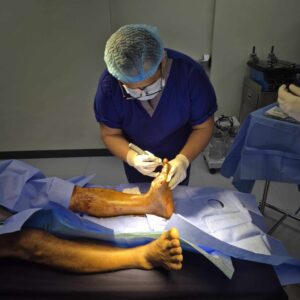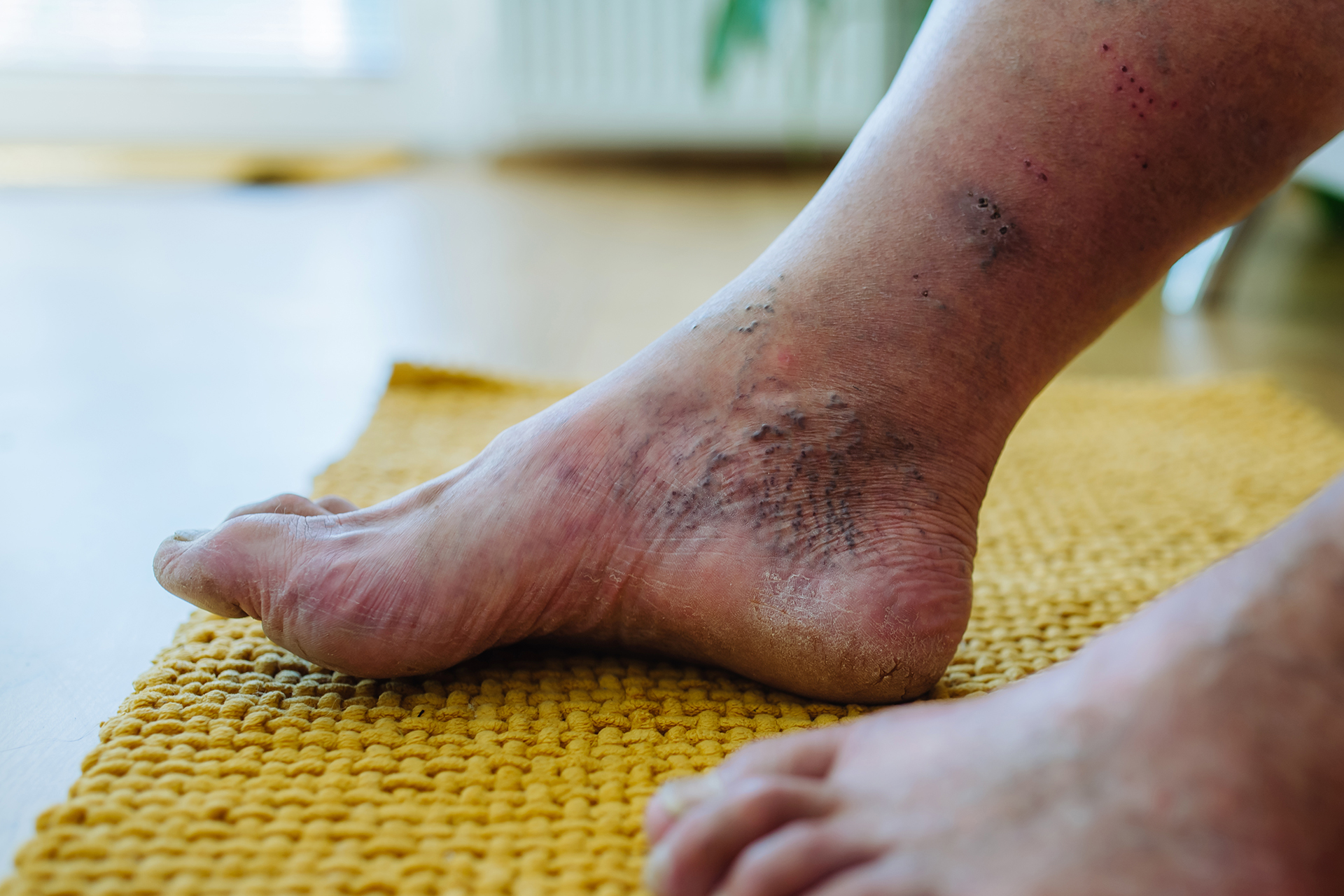Understanding the Importance of Diabetic Foot Care
Diabetes is a chronic condition that affects millions of people worldwide, and one of its most serious complications involves the feet. Many individuals with diabetes underestimate the importance of foot care, yet ignoring this aspect of health can lead to life-threatening outcomes. Diabetic foot ulcers are open sores or wounds that develop when nerve damage and poor circulation compromise skin integrity. Without proper care, these ulcers can progress quickly and raise the risk of infection and amputation. Research shows that a significant number of hospitalizations related to diabetes stem from foot ulcers. Comprehensive diabetic foot ulcer management plays a crucial role in preventing these complications and supporting long-term mobility. Understanding why proactive care matters is the first step in protecting overall health and quality of life.
What Exactly Is a Diabetic Foot Ulcer?
A diabetic foot ulcer is an open wound, usually located on the bottom of the foot, that does not heal properly due to underlying diabetic complications. These ulcers are caused by a combination of factors such as peripheral neuropathy, which reduces sensation, and poor circulation, which slows healing. Because of reduced feeling in the feet, many individuals are not even aware an ulcer has developed until it worsens. Early warning signs may include swelling, redness, drainage, or foul odor coming from the affected area. Left untreated, ulcers can become infected and lead to severe complications, including gangrene. Comprehensive diabetic foot ulcer management involves identifying the problem early, assessing the underlying cause, and taking immediate measures to reduce progression. Clear knowledge of what these ulcers are helps patients and caregivers take them seriously.
Risk Factors That Increase Vulnerability
Not everyone with diabetes will develop a foot ulcer, but certain risk factors increase vulnerability. Poorly controlled blood sugar is one of the most significant contributors, as it damages blood vessels and nerves over time. Peripheral arterial disease and neuropathy make the feet more susceptible to injury and slower healing. Wearing ill-fitting shoes or walking barefoot raises the likelihood of skin breakdown and open wounds. Patients with a history of ulcers or amputations are at particularly high risk of recurrence. Smoking further reduces circulation and compromises the healing process. Lifestyle choices, combined with underlying health issues, create a cycle that worsens if not addressed. Comprehensive diabetic foot ulcer management emphasizes minimizing these risk factors through consistent medical care and lifestyle adjustments.
Early Detection and Preventive Measures
Detecting diabetic foot ulcers in their earliest stages can significantly reduce complications. Patients are encouraged to perform daily foot checks, looking for cuts, blisters, redness, or swelling. Good foot hygiene, such as washing daily with lukewarm water and drying thoroughly, helps prevent infections. Moisturizing the feet while avoiding the spaces between toes reduces dryness and cracking. Choosing the right footwear and socks is essential; shoes should fit properly, and seamless socks can help prevent irritation. Regular visits to podiatrists allow healthcare professionals to detect changes before they become serious. Preventive care is often more effective and less costly than treating advanced ulcers. Comprehensive diabetic foot ulcer management highlights prevention as a cornerstone for long-term success.
Step-by-Step Approach to Comprehensive Diabetic Foot Ulcer Management
Managing a diabetic foot ulcer involves multiple coordinated steps designed to promote healing and prevent complications. The process begins with a thorough assessment and wound classification, which helps guide treatment strategies. Debridement, or the removal of dead and infected tissue, is often necessary to create a clean wound bed. Infection control is critical, and antibiotics may be prescribed when bacteria threaten healing. Specialized wound dressings, such as hydrocolloid or foam dressings, provide moisture balance and protection. Offloading techniques, such as using special footwear, casts, or braces, relieve pressure on the ulcer and support healing. In more advanced cases, therapies like negative pressure wound therapy or the application of skin substitutes may be recommended. A comprehensive diabetic foot ulcer management plan ensures that every stage of treatment is addressed with precision and consistency.
Role of Multidisciplinary Care Teams
Effective treatment often requires the involvement of multiple healthcare professionals working together. Podiatrists play a central role in assessing and treating ulcers, while endocrinologists help patients maintain proper blood glucose control. Vascular surgeons may be consulted to improve blood flow when circulation issues are present. Wound care specialists provide expertise in advanced therapies and dressing techniques. Dieticians and diabetes educators support lifestyle changes that enhance healing and reduce recurrence. Coordinated care ensures that patients receive guidance from every angle, reducing the chance of mismanagement. A multidisciplinary approach strengthens the effectiveness of comprehensive diabetic foot ulcer management by addressing both the root cause and the wound itself.
Lifestyle Adjustments That Enhance Healing
Lifestyle changes are an essential part of diabetic foot ulcer care. Proper blood sugar management supports tissue repair and reduces the likelihood of infections. A balanced diet rich in vitamins, minerals, and protein strengthens the immune system and speeds up recovery. Regular physical activity, tailored to the patient’s abilities, promotes better circulation and overall well-being. Smoking cessation significantly improves healing outcomes by restoring healthier blood flow to the extremities. Alcohol moderation prevents additional strain on the liver and kidneys, which are already affected by diabetes. Patients who embrace these changes often experience better healing and fewer recurrences. Comprehensive diabetic foot ulcer management is not only about treatment but also about long-term health improvements through lifestyle.
Long-Term Strategies for Prevention and Recurrence Reduction
Once an ulcer has healed, preventing recurrence is a lifelong commitment. Routine podiatric care should remain a regular part of diabetes management. Continuous glucose monitoring and improved metabolic control help prevent further damage to nerves and blood vessels. Custom orthotics and properly fitted shoes reduce pressure points and keep feet safe. Patients benefit from ongoing education, empowering them to take responsibility for daily foot care. Annual comprehensive foot exams by healthcare providers are highly recommended. By combining clinical care with personal vigilance, patients can drastically reduce their risk of repeat ulcers. Comprehensive diabetic foot ulcer management extends beyond healing to maintaining lasting foot health.
Common Myths and Misconceptions About Diabetic Foot Ulcers
There are several myths about diabetic foot ulcers that put patients at risk. One common belief is that pain always signals a problem, but neuropathy often prevents patients from feeling discomfort even when an ulcer is severe. Another misconception is that minor wounds will heal on their own, but in diabetes, even small cuts can escalate into dangerous ulcers. Some individuals rely on home remedies or over-the-counter treatments, delaying professional care until the problem becomes worse. Myths like these often create false confidence and delay urgent treatment. Patients must recognize that professional medical guidance is essential for safe and effective healing. Dispelling these myths is an important part of comprehensive diabetic foot ulcer management, ensuring individuals make informed choices about their care.
Frequently Asked Questions (FAQ)
1. How long does it typically take for a diabetic foot ulcer to heal?
Healing time varies depending on severity, treatment, and overall health. Some ulcers may heal within weeks with proper care, while others can take months.
2. What is the best type of footwear for someone with diabetes?
Supportive, well-fitting shoes with cushioning and no pressure points are recommended. Custom orthotics may also be advised by podiatrists.
3. Can diabetic foot ulcers be completely prevented?
While not every ulcer can be avoided, consistent foot care, proper footwear, and blood sugar management significantly lower the risk.
4. When should a person with diabetes seek urgent medical attention for a foot wound?
Any wound that shows signs of infection, such as redness, swelling, pus, or a foul odor, requires immediate medical care.
5. What are the latest advancements in diabetic wound care treatments?
Innovations include bioengineered skin substitutes, negative pressure wound therapy, and growth factor treatments that promote faster healing.











